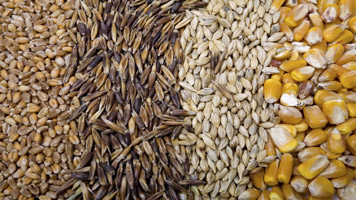French Winter Wheat Sowings Hit Higher Since At Least Early 1990s
Category: Grains, Miscellaneous
 (Agrimoney.com) – This year’s dismal harvest has not put French farmers off grains, with winter wheat sowings edging to their highest in more than 26 years – although dry weather has provoked a drop in rapeseed area to a four-year low.
(Agrimoney.com) – This year’s dismal harvest has not put French farmers off grains, with winter wheat sowings edging to their highest in more than 26 years – although dry weather has provoked a drop in rapeseed area to a four-year low.
France’s farm ministry – in its first forecast for winter grain sowings for the European Union’s top producing country – pegged them 7.34m hectares.
While down 57,000 hectares year on year, plantings at that level remain comfortably above the five-year average area of 7.04m hectares, with growers keeping faith with grains despite the persistent rains which sent this year’s yields of summer-harvested crops tumbling.
Lobby group Coceral on Monday underlined the setback to France’s grains production, estimating it this year at 53.73m tonnes, a 25% drop year on year, with the soft wheat harvest pegged at 28.13m tonnes, a decline of 31%.
Soft wheat vs durum
In fact, winter sowings of soft wheat, at 5.19m hectares, were seen edging 9,000 hectares higher year on year, to their highest on records going back to the 1993 harvest.
While seedings are estimated to have fallen by 3.1% in Champagne-Ardenne, in north eastern France, they are pegged up 6% in nearby Lorraine, with farmers reverting some land to soft wheat from durum, the type used in making pasta.
Seedings of durum wheat were pegged at 362,000 hectares, declining for the first time in three years, albeit by a modest 8,000 hectares.
“At the time of planting in 2015 and 2016, the price ratio between soft wheat and durum wheat was favourable for durum,” the ministry said.
“This benefit faded out for the 2017 seeding campaign.”
‘Lack of rain thwarted sowings’
Barley was also seen as falling somewhat out of favour, with winter seedings dropping by 58,000 hectares to 1.38m hectares, the first decline in five years.
Champagne-Ardenne plantings were pegged 17% lower.
However, national rapeseed sowings suffered a bigger area drop in percentage terms, of 5.1% to 1.45mn hectares, undermined ironically by the turn drier in France’s weather after its harvest-hurting rains.
“A lack of rain thwarted sowings, particularly in north eastern France,” the ministry said, noting that some fields were “sown with cereals instead”.
Winter cereals tend to have a far longer planting window than rapeseed, which is typically planted in August or September.




